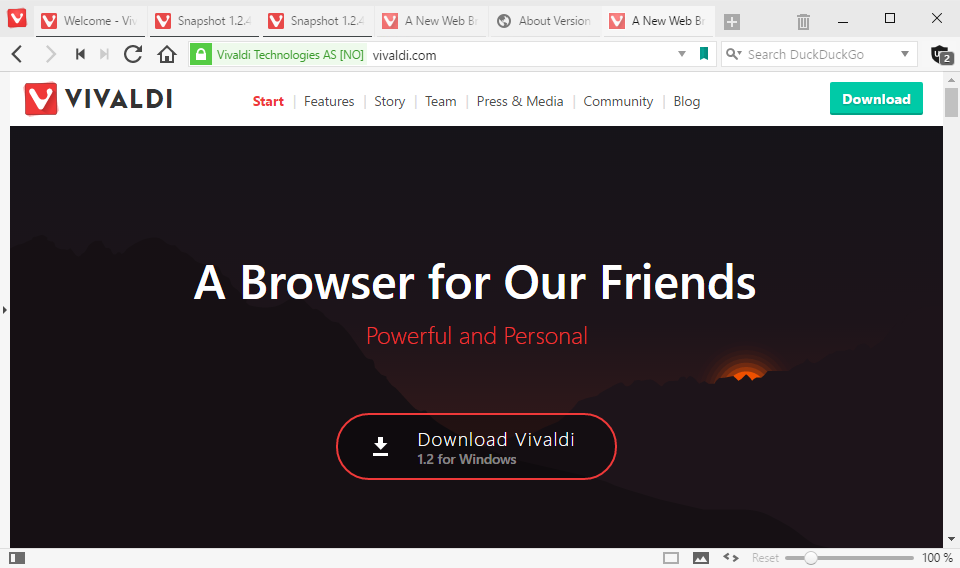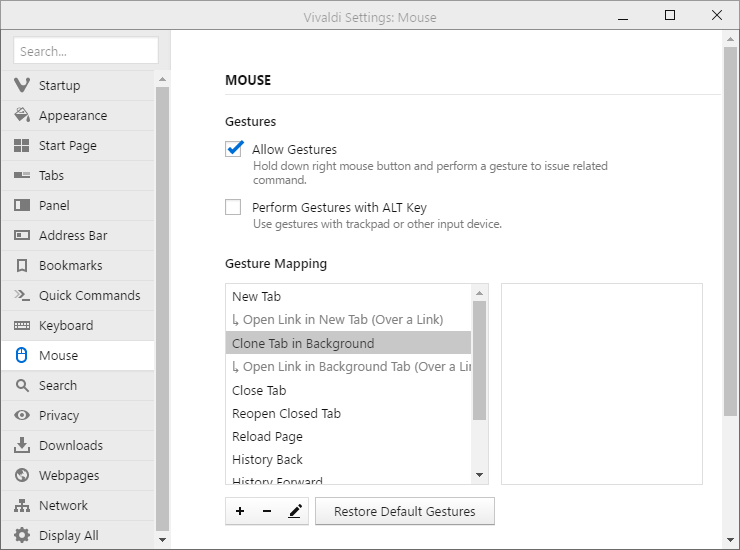Vivaldi 1.2 Browser now available
Vivaldi 1.2 is the latest stable version of the popular web browser that brings along with it editable gestures, clearer download progress, more tab improvements and a truckload of fixes and minor improvements.
Vivaldi has quickly risen to popularity thanks to a development philosophy that focuses on giving users choice when it comes to the browser instead of streamlining it by removing choice or not giving users choice in first place.
Most modern web browsers fall into the second category and while there is nothing wrong with that inherently, at least some Internet users want control of the browser and options when it comes to their browsing experience.
Vivaldi 1.2

Vivaldi 1.2 is already available for download and direct update. You can run an update check from within the web browser if you have an earlier copy of it on your system.
To do so, simply click on Vivaldi > Help > Check for Updates. If an update is found, it is downloaded and installed automatically.
Anyone else can visit the official website to download the latest version of Vivaldi for their operating system from the site.
Let's take a look at what's new in Vivaldi 1.2
Gestures

Vivaldi supported gestures for a while but the new version introduces options to change existing gestures or create new ones easily in the settings.
Gestures enable you to use the mouse, trackpad or other input devices to run commands such as going back a page, reloading a page or opening a new tab. To use gestures with the mouse, hold down the right mouse button while on a page and draw the gesture on the screen.
You find existing gestures in the settings. The easiest way to open the settings is to use Alt-P to open them, but you can alternatively load vivaldi://settings in the address bar or click on Vivaldi > Tools > Settings if you prefer it that way.
The mouse menu lists all existing gestures the browser supports. Each gesture is demonstrated when you select it so that you know how it is executed.
You can use the controls at the bottom of the list to add a new gesture, or remove or edit an existing gesture.
Gestures are made up of up to five vertical or horizontal strokes, and the list of commands you can associate with gestures that are not configured by default is quite large.
Vivaldi 1.2 supports gestures for certain pages, e.g. the browsing history or extensions, for web panels, to switch to tabs directly, to zoom in or out, focus on the address field and a lot more.
New Keyboard Shortcuts
Vivaldi supports many keyboard shortcuts and version 1.2 adds to that. The browser ships with controls to add, change or remove keyboard shortcuts in the settings, something that most browsers don't offer anymore.
- Alt-Enter opens the URL you enter in the address bar in a new tab.
- Alt-Shift-Enter opens the same URL in the background.
Smaller changes in Vivaldi 1.2
- The zoom function goes down to 20% and up to 500%, and you may enter a zoom level manually in the status bar.
- You may set any web page as the browser's new tab page. To do so, open Settings > Tabs and enter a URL under New Tab Page there. Click save afterwards and you are set.
- Multiple selected tabs can be closed with keyboard shortcuts now, and the context menu of a selection of multiple tabs works now like the context menu of individual tabs.
- Information in the downloads panel give you a clearer estimation of progress in Vivaldi 1.2.
Closing Words
Vivaldi 1.2 adds new improvements and fixes to the browser. While some things still need to be fixed -- the slow loading Settings page for instance -- it is the choice that Vivaldi offers that I find most refreshing. Imagine that, a browser that lets you change keyboard shortcuts natively, what a novel concept.
You can check out my initial review of Vivaldi, and the Vivaldi 1.1 update review as well for the full picture.
This article was first seen on ComTek's "TekBits" Technology News

- Log in to post comments